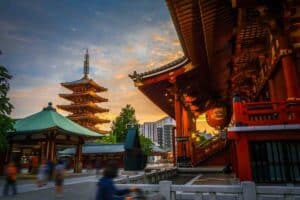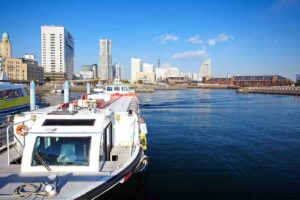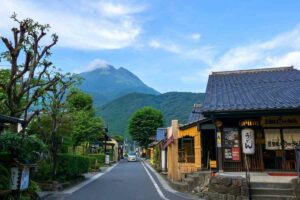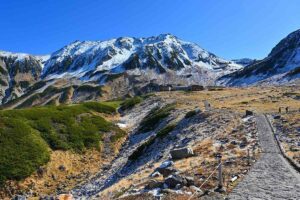Japanese castles are an iconic and significant part of the country’s history.
Rooted in medieval times, these structures were built by regional lords as defensive fortifications to protect their territories from invading forces during wars that took place throughout Japan’s feudal era.
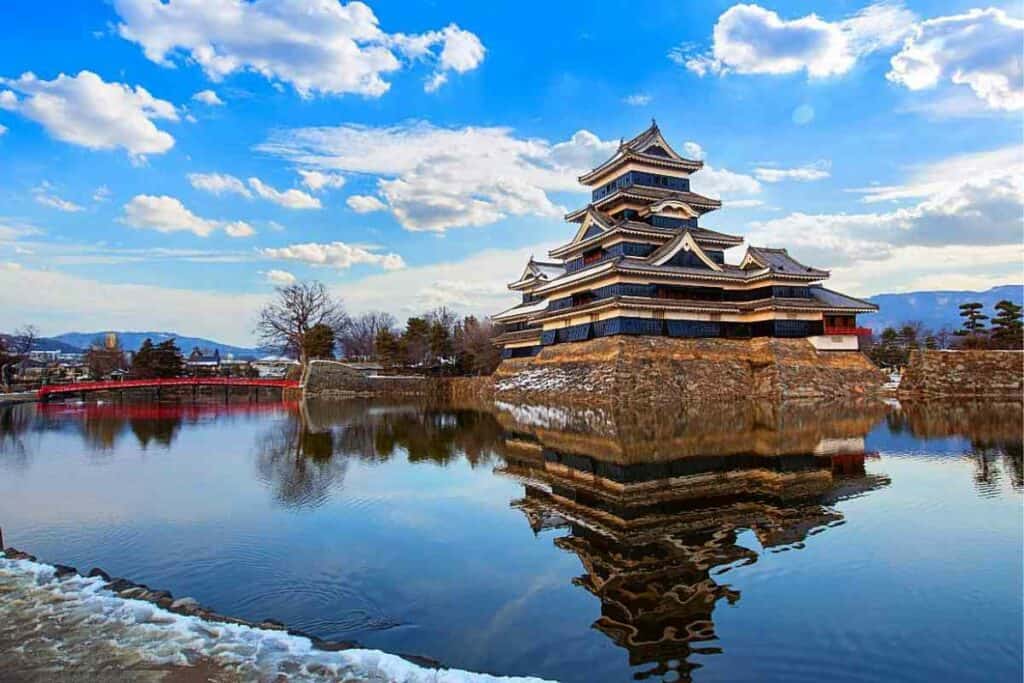
They evolved over time into impressive architectural feats with intricate designs marked by beautiful stone works, rambling wooden pathways, and fortified walls made out of plaster or wood materials.
Today Japanese caste sites serve not only a historical significance but also act as tourist attractions offering visitors a glimpse back at this extraordinary period amid awe-inspiring scenery set atop hills or overlooking large bodies of water just like its roots typically demanded.
Table of Contents
Early Development of Japanese Castles (794 – 1185)
It wasn’t until the Heian period (794-1185) when stone walls began to be used in castle construction during times of peace.
By building defenses far beyond previous kingdoms or tribes throughout Japan, fortress towns became cities with permanent residents who conducted trade and commerce within their walls without fear of attack.
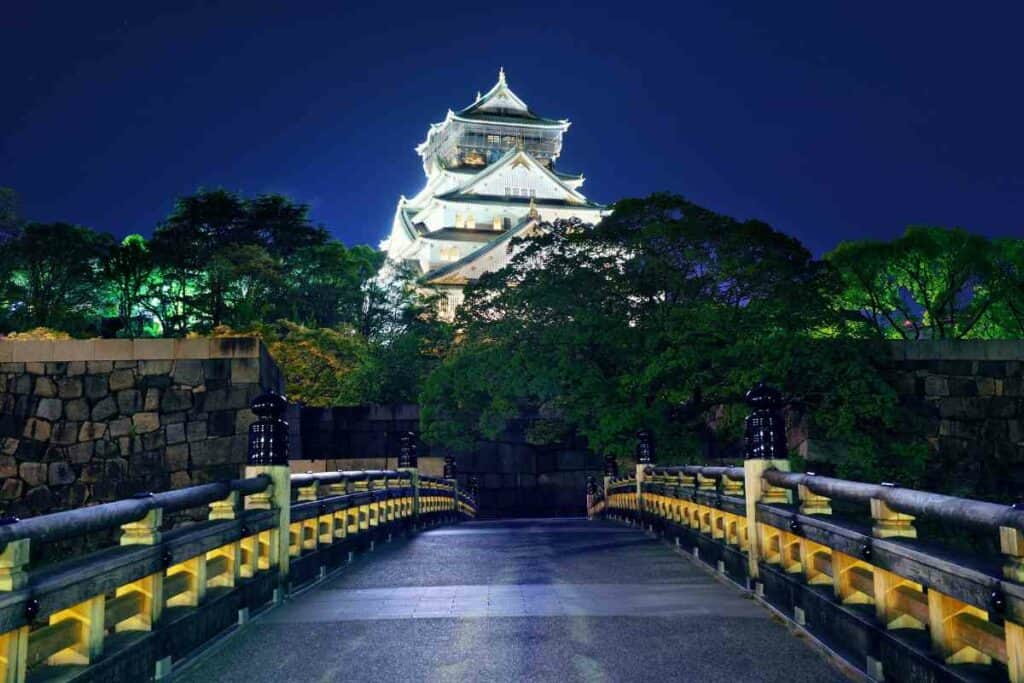
During this time samurai families started increasing in power gaining more control over land ownership; so much so that some lords began foreboding others’ ability to create lavish residences near theirs—because other noblemen could use it to install rebellion plans.
By the end of this period famous feudal clans such as the Taira family ran controlled large parts through partnerships with shoguns which helped expedite technological advancements and military constructions including:
- Moats – which were filled with alligator-infested water
- Guardianship paths toward them
- Archery towers commanding high-ground positions atop
Gradually over time, battlements were improved and fortified walls raised higher which ultimately led to secure castle towns.
Instead isolated fortresses spread all around the land creating greater interconnectivity and making it easier for lords or their retinues when traveling between regions
One major defining feature seen is that most original medieval-era castles known today had varying levels of influence from Europe such Gothic-style design evident at Matsumoto Castle, also characterized by people referring to defensive stonework installation capability ‘Kasourou’.
The Sengoku Period (1467 – 1603) and The Evolution of Castles
The Sengoku Period was a time of great change and upheaval in Japan.
It saw the rise and fall of different daimyo (feudal lords) as they fought for power, vying to become shogun or unite Japan under their rule.
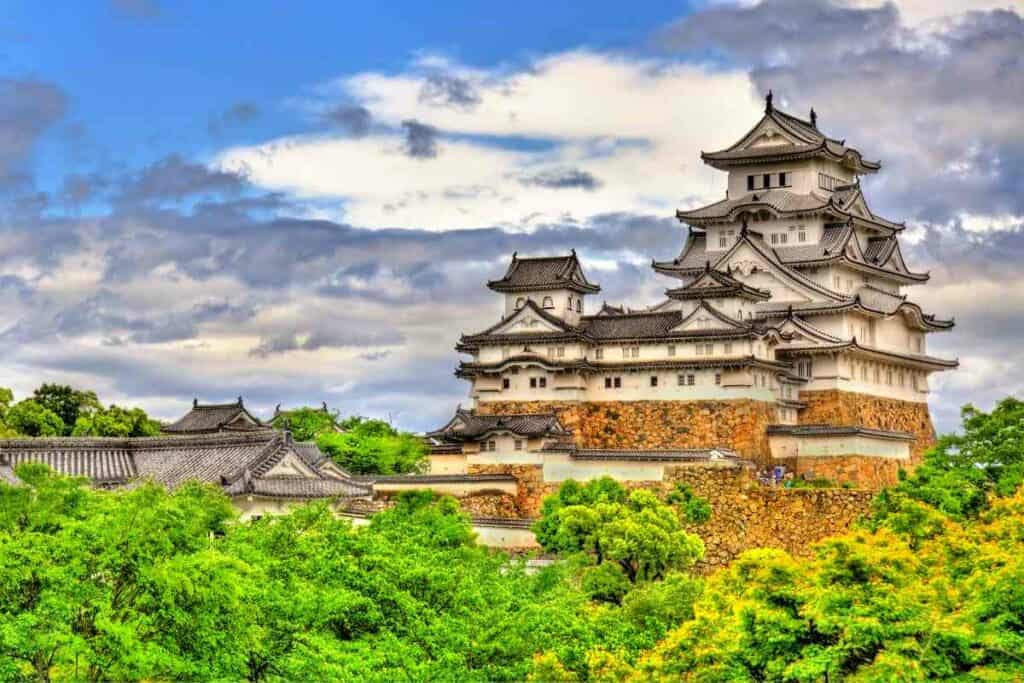
One aspect that changed drastically during this period was the evolution of castles. At first, castles were simple fortifications made from wood and earthworks.
However, with advances in warfare technology such as guns, these types of defenses soon became outdated.
As modernization progressed past hand-crafted weapons like swords to more advanced ones like firearms hundreds of years ago, architecture had no choice but uplevel to update itself fast since it worked closely alongside technologies used by armies at war.
My travel through Japan introduced me to some of these majestic fortresses such as Himeji Castle in Hyogo Prefecture or the ruins of Azuchi Castle in Shiga Prefecture.
These castles are architectural marvels showcasing not only defense characteristics but also aesthetic beauty, complete with spacious courtyards and intricate interior designs worthy of art exhibits!
The Sengoku Period may have been a time full of chaos and political strife, but it was catalytic for transforming castle architecture into what we know today: magnificent structures that inspire awe onlookers!
The Edo Period (1603 – 1868) and The Golden Age Of Castles
The Edo Period was a time filled with excitement and cultural transformation in Japan, lasting from 1603 to 1868.
It’s known as the Golden Age of Castles because many castles were built during this period, creating an impressive architectural wonderland that still amazes us today.
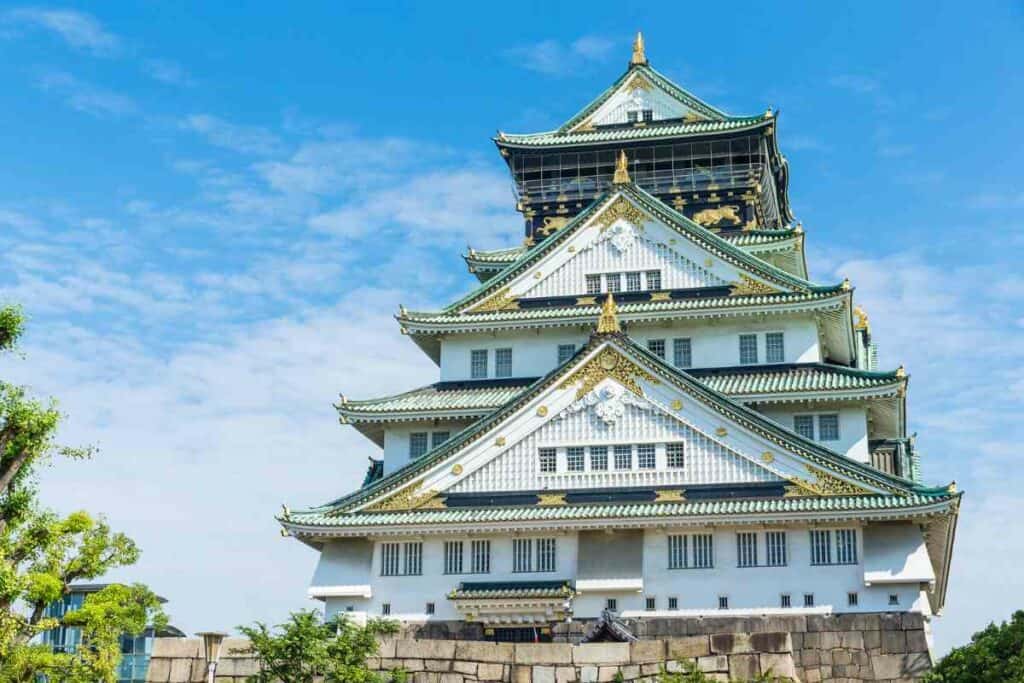
I remember walking through some of these magnificent structures when I visited Japan last year.
The first castle I saw was Osaka Castle which took my breath away with its tall walls made out of stone blocks arranged into neat squares called Masugata, protecting warriors against enemy attacks back then.
The design and features incorporated on each fortress reflected much about Japanese culture; you could see their pride for beauty even in functional buildings such as citadels or keeps found within the domain surrounding gardens.
With intricately carved tatami mats exquisitely decorated kanji panels – it all captivated me!
Beyond being majestic constructions meant solely to defend cities like Nagoya or Himeji from invading forces throughout history (like Korea), they also served as seats governing law enforcers who maintained order eagerly.
Despite the grandeur and historical significance, many of these castles have seen their fair share of destruction during times of war.
The Edo Period saw several Japanese emperors try to centralize power under one government which often involved taking over regional territories managed by feudal lords.
The Meiji Restoration (1868) and the Decline of Castles
In 1868, the Meiji Restoration marked a turning point in Japanese history. With it came an end to feudalism and significant changes for samurai warriors – this inevitably led to a decline of castles throughout Japan.
As someone who has always been interested in the culture and architecture of these historical structures, it was sad to see many falling into disrepair or being repurposed entirely.
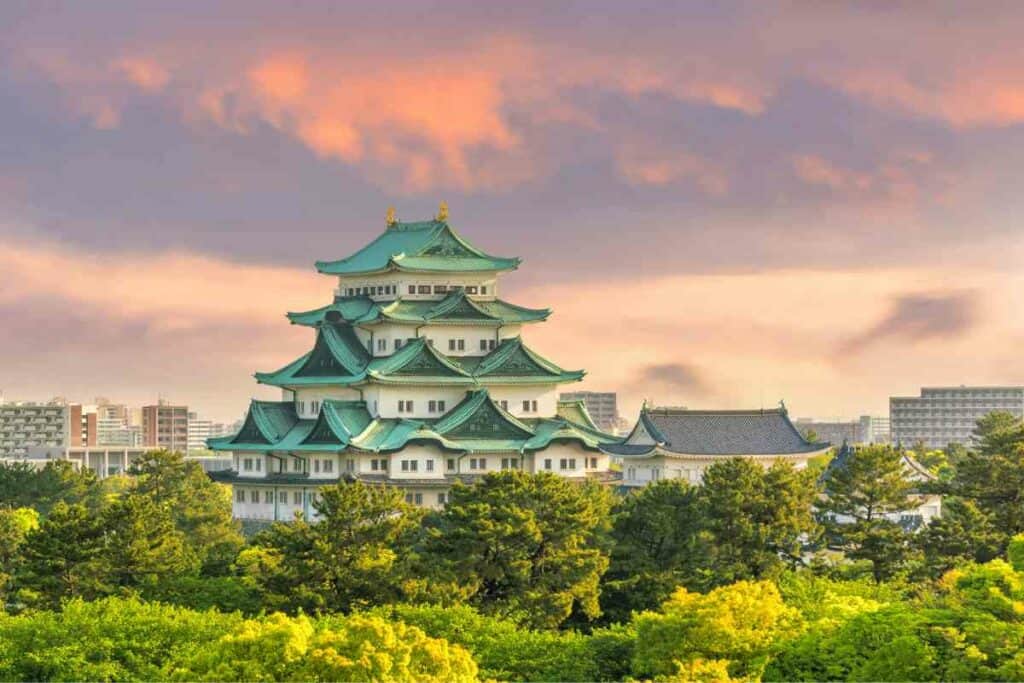
However, as I visited some surviving castles which had become popular tourist destinations turned museums; their transformation gave me insight into how they were once used by powerful leaders like shoguns and daimyos centuries ago.
The fact is that after the restoration period began most chateaus across Japan ceased serving any military role – Western-styled fortresses took over instead when guns replaced traditional bows & arrows leading them obsolete far quicker than anticipated.
Many former homes of influential members transformed from defensive sites & eventually became government buildings such as Kokyo Palace situated at Tokyo’s heart presently regarded as a top-rated attraction amongst locals/foreigners alike.
However what really saddens people today are tales about age-old castle ruins akin to Himeji Castle, that lay neglected and abandoned until the 20th century when extensive renovations were carried out to restore it as a historical site.
Similarly, Matsumoto Castle is another traditionally famous yet charming castle famed for surviving several sieges down its long history.
The Significance of Japanese Castles Today
Castles like Himeji Castle were once symbols of power and military might but have since taken on a new significance in modern times.
Preservation efforts across the country mean that many castles remain intact- Kinkakuji is another example-this has helped greatly in solidifying their importance as national treasures and sources of pride for local communities.
Restoration work does not come cheaply or easily though – especially considering natural disasters such as earthquakes which pose real threats to longevity.
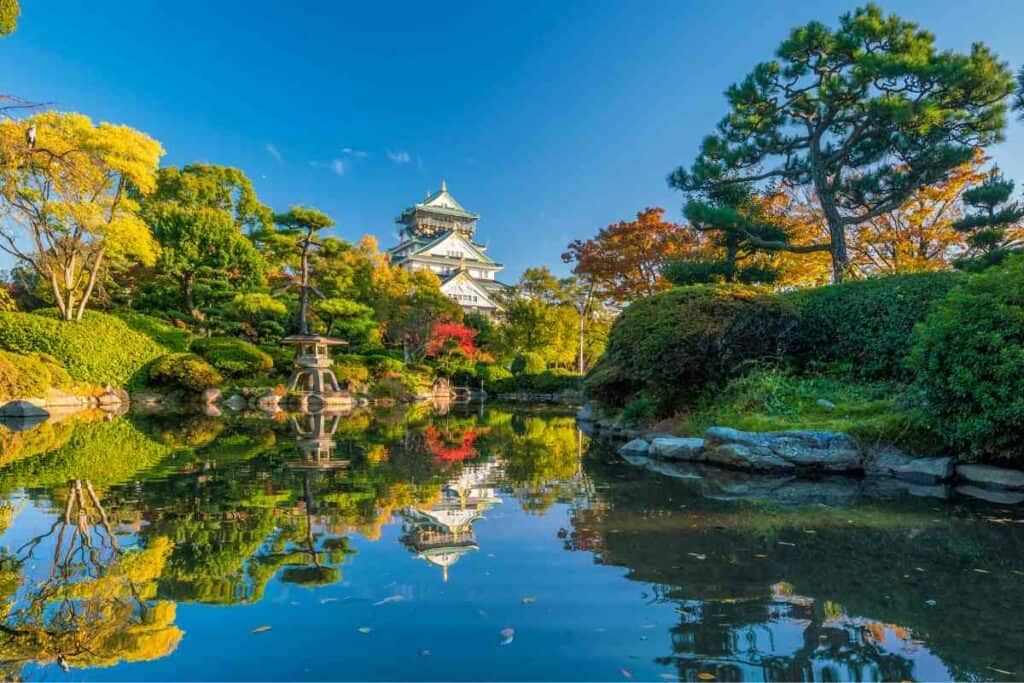
For present-day visitors, exploring castle grounds provides an immersive experience of ancient customs while also igniting interest in cultural heritage through architectural design & interior furnishings.
Further cementing them within our collective psyche as beacons symbolizing traditions long gone yet still resonating today with both locals (who take appreciation levels up multiple folds) plus international tourists craving authentic travel experiences alike!
Japanese castles embody uniquely rich histories — often serving various purposes over time from defensive strongholds during conflicts between warring lords to places of political intrigue and cultural exchange. They offer insight into Japan’s past, showcasing impressive feats of engineering, artistry, and military strategy.
The role that castles play in promoting tourism can’t be understated either – by hosting various events like cherry blossom viewing parties or nighttime light-ups they open up avenues for local economies through souvenir shops & eateries situated nearby.
These become magnets attracting both tourists as well locals leading them toward economic empowerment
In many ways, Japanese castles serve not only as historical gems but also as critical boosters aiding cities nationwide toward greater market opportunities.
It makes me feel hopeful knowing that we are preserving such valuable pieces of our collective identity while simultaneously creating new experiences worth cherishing!
4 Most Famous Japanese Castles Still Standing
1. Himeji Castle
The Himeji Castle in Japan is one of the most stunning and well-preserved castles I have ever seen. It was built over 400 years ago and has remained unscathed by wars, natural disasters, or any other kind of damage.
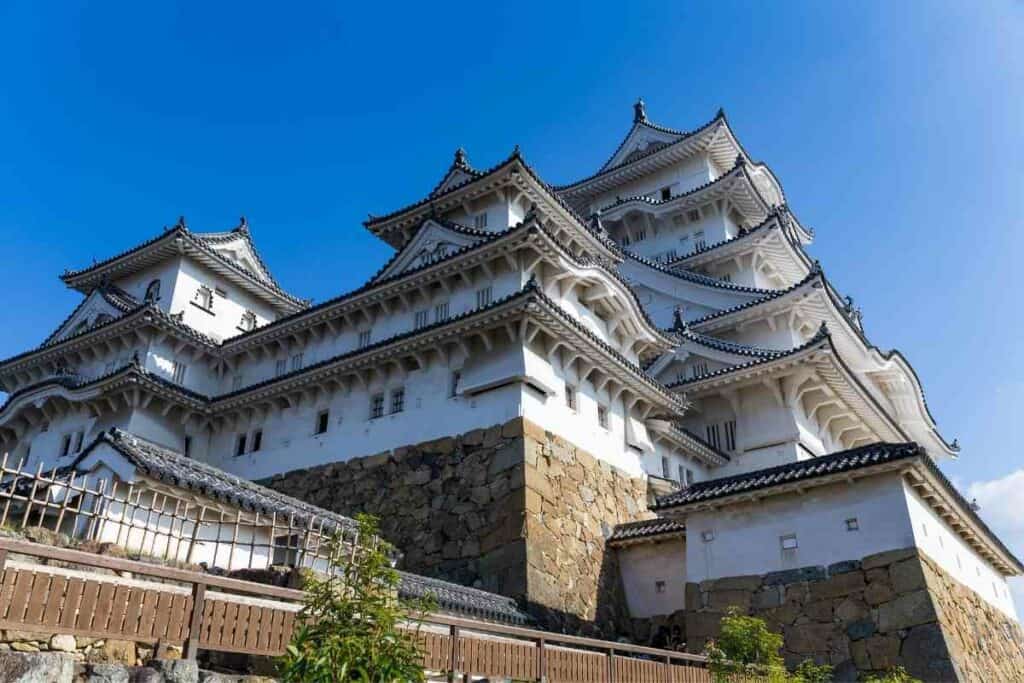
As you approach the castle gates, it’s hard not to feel like royalty with its grandeur design. Walking through all six floors gives insight into how people used to live back then: from sleeping quarters on tatami mats to trapdoors for sudden exits during an invasion attempt- this place is full of history!
The view from atop the main tower alone makes visiting worthwhile; looking out at surrounding areas proves just why samurai warriors chose this location as their stronghold centuries before we tourists stepped foot here.
For photographers who want a unique perspective when capturing Japanese architecture – without crowds getting in the frame – consider coming right after opening hours!
You may also like ?
2. Matsumoto Castle
The Matsumoto Castle is one of the most impressive historic sites in Japan. Located in Nagano, Japan, this castle dates back to the 16th century and offers a glimpse into feudal life during that era.
As soon as you arrive at Matsumoto Castle, it’s clear why they call it the “crow castle.” The black walls are imposing against a bright blue sky – quite intimidating!
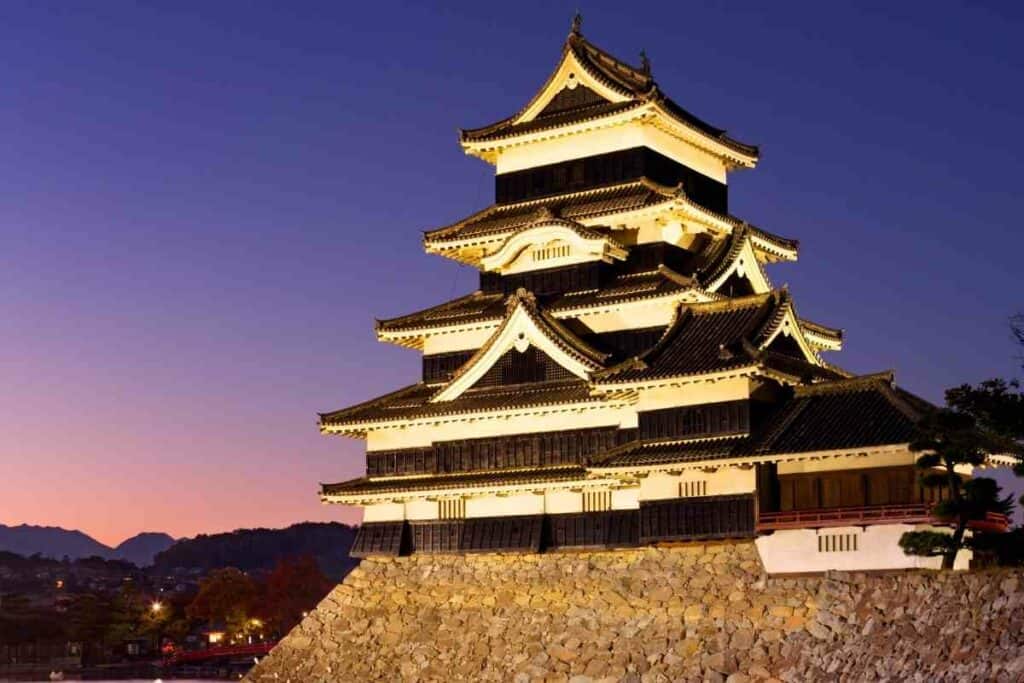
But upon entering its gates and passing through each level of different living quarters, storehouses for weapons & food supplies along with lookout towers will amaze anyone fortunate enough to have made their way inside or atop its many balconies where views stretch out across traditional Japanese gardens below.
The architectural intricacies alone would take hours (if not days) to admire.
You will be amazed how ingenious these early builders were without modern technology yet managing artistry with intelligent improvements over time like simple plungers carved from wood-and-water systems providing cool air flow throughout hot summers.
3. Osaka Castle
Osaka Castle is a towering symbol of Japan’s rich history and culture. It was built in the late 16th century by Toyotomi Hideyoshi, one of Japan’s most famous feudal lords.
Today, Osaka Castle continues to attract visitors from all over the world who come to marvel at its stunning architecture and learn about Japanese heritage.
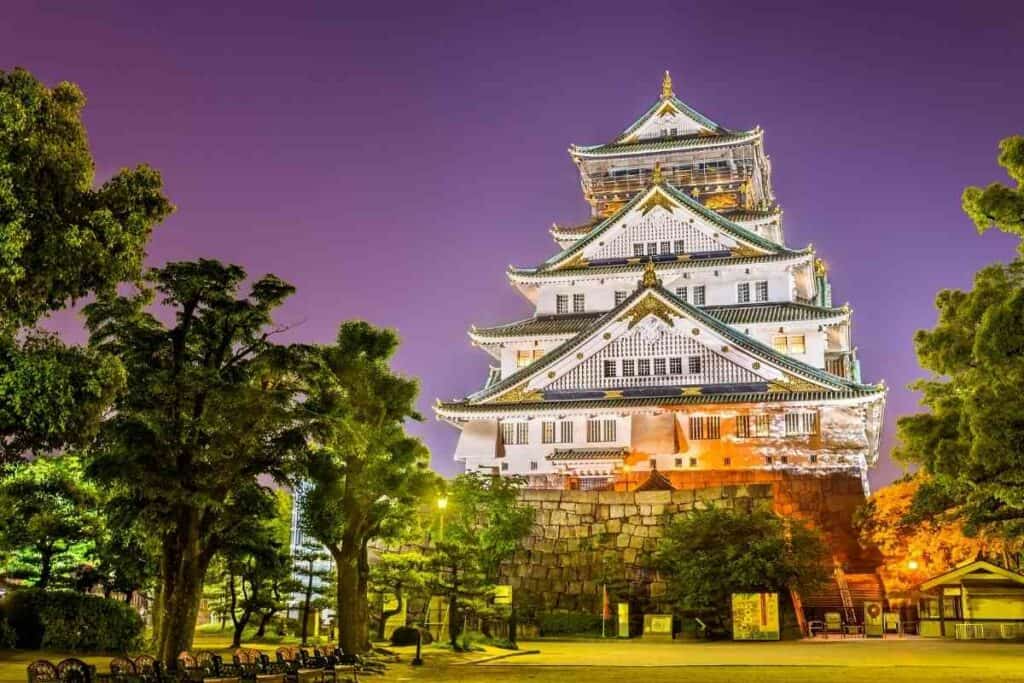
The castle has been faithfully restored after being damaged during World War II and now features a museum showcasing artifacts related to the castle’s historical significance.
One highlight for visitors is taking an elevator ride up through eight floors that lead into several exhibition rooms allowing you fully experience what it must have felt like way back then as well as seeing spectacular views overlooking downtown Osaka City today!
Visiting this iconic landmark will leave you with unforgettable memories of ancient times combined with modern-day delights!
4. Nijo Castle
Located in Kyoto, this UNESCO World Heritage site takes you on an educational journey through Japanese history and architecture. Built over 400 years ago for shogun Tokugawa Ieyasu, the castle boasts intricate carvings and paintings throughout each room that are sure to leave visitors awe-struck.
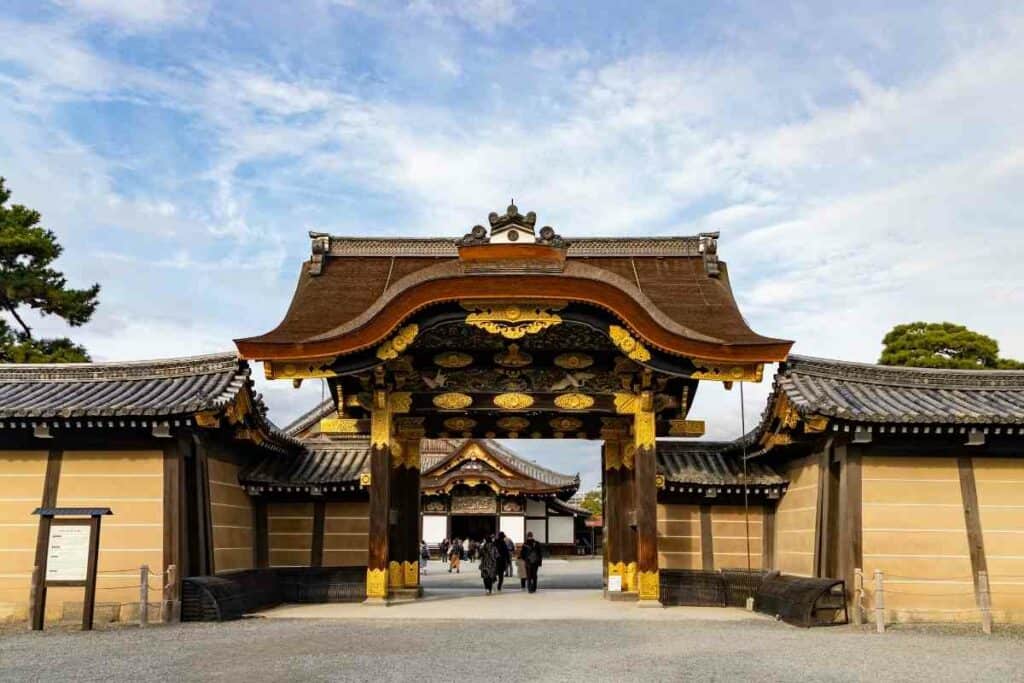
Be sure not to miss one of its most unique features: nightingale floors! These specially designed boards squeak like birds when walked upon as an early warning system against intruders- something typical during feudal times!
After visiting every corner of the palace, don’t forget the wabi-sabi gardens outside which provide a quiet moment after all activity inside plus another chance at photography heaven due to perfection by design.
The combination is pure magic making it understandable why many consider Nijo Castle among Japan’s top attractions.
In Conclusion
Japanese castles have a rich history dating back to the feudal era. They played significant roles in warfare and politics and remain important cultural landmarks today.
Their architectural designs are impressive feats of engineering that continue to captivate visitors from all over the world.
- 5 Unexpected Tourist Traps in Japan That Could Blow Your Budget
- A Traveler’s Guide to Honshu (Japan’s largest Island)
- Best Snow Monkey Destinations In Japan (My Top 6 Picks)
- Best Marinas in Japan (10 Finest Waterfront Marinas)
- Discover Yufuin Floral Village: The REAL Ghibli Village
- Best Time to Visit Japan Alpine Route


